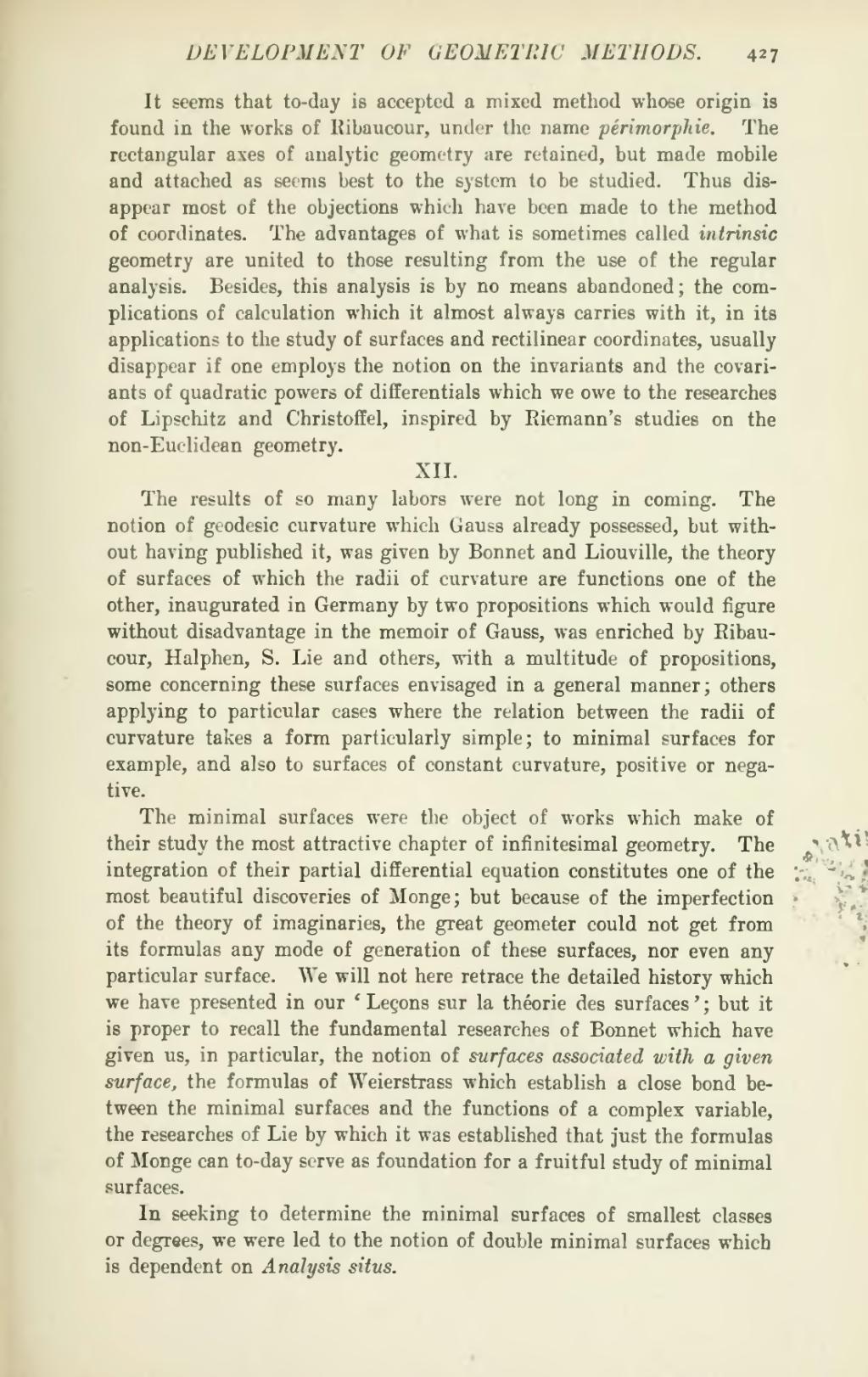It seems that to-day is accepted a mixed method whose origin is found in the works of Ribaucour, under the name périmorphie. The rectangular axes of analytic geometry are retained, but made mobile and attached as seems best to the system to be studied. Thus disappear most of the objections which have been made to the method of coordinates. The advantages of what is sometimes called intrinsic geometry are united to those resulting from the use of the regular analysis. Besides, this analysis is by no means abandoned; the complications of calculation which it almost always carries with it, in its applications to the study of surfaces and rectilinear coordinates, usually disappear if one employs the notion on the invariants and the covariants of quadratic powers of differentials which we owe to the researches of Lipschitz and Christoffel, inspired by Riemann's studies on the non-Euclidean geometry.
XII.
The results of so many labors were not long in coming. The notion of geodesic curvature which Gauss already possessed, but without having published it, was given by Bonnet and Liouville, the theory of surfaces of which the radii of curvature are functions one of the other, inaugurated in Germany by two propositions which would figure without disadvantage in the memoir of Gauss, was enriched by Ribaucour, Halphen, S. Lie and others, with a multitude of propositions, some concerning these surfaces envisaged in a general manner; others applying to particular cases where the relation between the radii of curvature takes a form particularly simple; to minimal surfaces for example, and also to surfaces of constant curvature, positive or negative.
The minimal surfaces were the object of works which make of their study the most attractive chapter of infinitesimal geometry. The integration of their partial differential equation constitutes one of the most beautiful discoveries of Monge; but because of the imperfection of the theory of imaginaries, the great geometer could not get from its formulas any mode of generation of these surfaces, nor even any particular surface. We will not here retrace the detailed history which we have presented in our 'Leçons sur la théorie des surfaces'; but it is proper to recall the fundamental researches of Bonnet which have given us, in particular, the notion of surfaces associated with a given surface, the formulas of Weierstrass which establish a close bond between the minimal surfaces and the functions of a complex variable, the researches of Lie by which it was established that just the formulas of Monge can to-day serve as foundation for a fruitful study of minimal surfaces.
In seeking to determine the minimal surfaces of smallest classes or degrees, we were led to the notion of double minimal surfaces which is dependent on Analysis situs.

